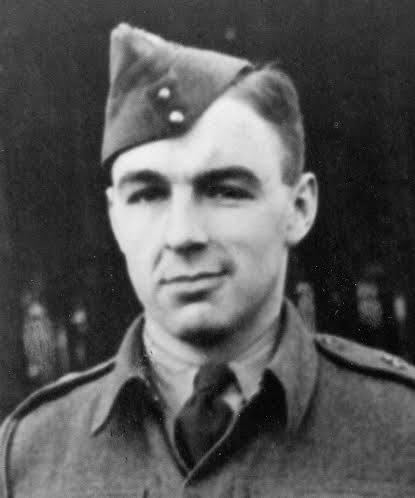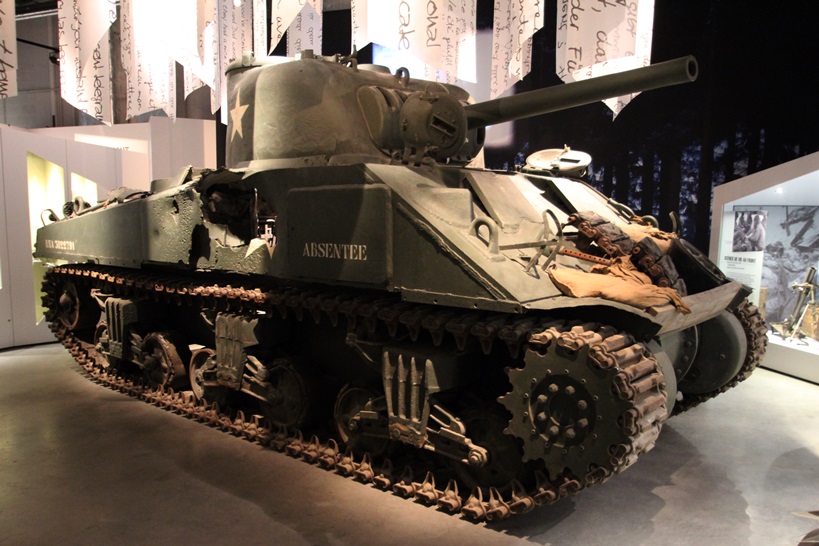Graham, James Douglas
- Date of birth:
- (Napanee/Ontario, Canada)
- Nationality:
- Canadian (1931-present, Constitutional Monarchy)
Biography
A Young Officer’s Journey to War
Doug Graham was born and raised in Napanee, ON. He studied Mining Engineering at Queen's University, graduating in 1940. Like many of his Queen’s classmates, he enlisted in the Canadian Army and joined the Royal Canadian Engineers. He left Canada in August 1942 and was later assigned to the 10th Field Squadron in the 5th Canadian Armoured Division later in November. The squadron trained hard through the winter, mostly developing bridging, route repair and mine clearance.
The 10th Field Squadron left England for Italy October 1943 destined for Naples. The convoy was attacked on 6 November, sinking one ship carrying Canadians. Doug's personal diary reports his ship was unsuccessfully torpedoed the following day.
Once ashore in Italy, they took over well-used equipment and vehicles from the British 7th Armoured Division who were returning to England. The Squadron was moved over 200 miles southeast to the Taranto area and attached the 1st New Zealand Division. Despite having to complete a great deal of vehicle and equipment maintenance, they immediately got to work on bridging and route repair and construction tasks. As the 5th Armoured Division gained strength in Italy, the Squadron moved closer and closer to the front relieving other 8th Army formations. Their first action came on 17 January 1944 supporting the Perth Regiment in an attack in which four NCOs and two sappers were wounded.
Craters and More Craters
By February, the Squadron had moved up the Adriatic coast to the area of Orsonga in the Abruzzo region, just southwest of Ortona. The weather was dreadful and Doug reports having to drain road craters during a snowstorm. Route maintenance was the main task and the 10th was assigned maintenance of the famous ‘Impossible Bridge’ on the Moro River. This construction of this bridge had been deemed impossible during the Moro River Campaign in December 1943 but against all odds. Indian sappers hand carried Bailey bridge parts and components to the enemy side and launched the bridge from there. Mine and booby trap clearance were the order of the day for the next four weeks until the squadron opened ran a Pioneer School from mid-March until mid-April.
The Squadron was then moved back towards Naples to the city of Caserta. Again, bridging and mine training, rest and maintenance, as well as planning for the Liri Valley operation occupied their time until mid-May when the 5th Armoured Division started moving forward to the Hitler Line. The time was punctuated by movement, waiting, movement, and waiting. Crossings were built and mines were lifted. Sapper patrols went well behind enemy lines. Men were killed and many wounded. Two members of the 10th Field Squadron were decorated for bravery – Corporal J.D. Laloge and Sapper H.E. Anstie.
After the Liri Valley, there was more training, more moves and more route repair and construction. For two weeks in June, Doug’s troop was responsible for what he calls in his diary, a ‘vehicle assault course’. This was built among the ruins of the Hitler Line. For the rest of July and the first part of August, except for a few days in hospital, Doug and his troop continued training in demolitions and knots and lashings. There were also the never-ending route repair tasks.
In late August, the Division started its highly secret move to the other side of Italy and on 25 August crossed the Metauro River to begin the Gothic Line Battle. I will skip ahead to the Battle of Coriano Ridge as a more complete description of the Gothic Line Battle is contained elsewhere.
"The Embarrassing Ridge on Our Left"
The Besanigo River was really just a slow-moving creek but the banks were high and steep making it impossible for tanks to cross. The solution was to use Sherman dozer tanks to knock the banks down and build diversions. Doug completed his reconnaissance the night before. The 10th Field Squadron’s battle had not yet begun when on the morning of the attack, a German shell hit their kitchen truck at breakfast. Twenty-eight men were hit of whom six were killed, three later died of wounds and 11 were seriously injured.
The attack kicked off at 0100 hrs on 12 September with a huge artillery barrage. That did not stop the Germans from raining down mortar and machine gun fire on the crossing sites. Doug and his troop were assigned two of the three planned crossings. They had the wheeled crossing open by 0544. The tank crossing was more difficult. The poor light made it impossible for the Sherman operator to work alone and Doug personally directed the work from outside. When he heard that the other two Shermans working in the third crossing had broken down, he realised the success of the assault now fell on his soldiers. As soon as his crossing was open, he took the troop and dozer to the third crossing on his right. The driver was more than reluctant and Doug rode on the outside of the turret over 1000 yards of open, machine gun swept ground. He stayed on the tank until the dozers work was done and continued to lead his troop until the crossing was open at 0800 hours. The Canadian tanks of the New Brunswick Hussars arrived on the ridge minutes before German tanks appeared in the area.
After the Gothic Line
After the war, Doug returned to Canada and worked at the Nylon Plant in Kingston. Attending Queen’s in his spare time, he earned the necessary civil engineering qualifications to enable him to become the Deputy City Engineer for the City of Kingston. He was eventually promoted to the position of City Engineer for Kingston and held this position until he retired.
In his retirement, he enjoyed travelling, spending time with his two daughters, their husbands and their children and he continued to be involved in his local church.
He passed away having lived a very rewarding and full life.
Do you have more information about this person? Inform us!
- Period:
- Second World War (1939-1945)
- Rank:
- Lieutenant
- Unit:
- No. 3 Troop, 10th Field Squadron RCE, 5th Canadian (Armoured) Division, Canadian Army
On the night 12/13 September 1944, during the attack on the Coriano ridge, number 3 troop, 10 Canadian Field Squadron was detailed to open one wheeled and one tracked diversion across the Besaniga, all bridges having previously been demolished. From 0100 hours, the crossings were under continuous mortar and light machine-gun fire from Coriano. Shelling was intermittent but heavy, and made it impossible to work anywhere in the area. At 0400 hours Lieutenant Graham, realizing that his crossings were vital, made a personal reconnaissance of the route, ordered his Sherman Dozer to the track route and led his protective platoon to the positions he led chosen. On completion of the tank route, he led the Sherman Dozer to the wheeled route and personally directed the machine which, due to the poor light was unable to work alone. Mortar and small arms fire were particularly heavy at this time and casualties were being suffered by nearby infantry in the ditches. On completion of this second crossing, Lieutenant Graham received word that the Sherman Dozer on his right flank had broken down and that unarmoured bulldozers could not get forward. Sitting on the outside of his tank, he directed it across 1000 yards of shell swept country and successfully completed a crossing on the right flank. By his outstanding bravery and coolness under fire, Lieutenant Graham established three crossings over the Besaniga, over which supporting weapons and tanks passed, thereby ensuring the success of the Brigade plan, and allowing the 4 British Division to pass through.




